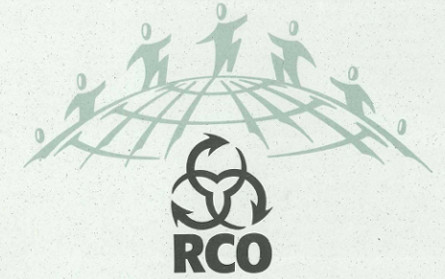
Since its formation in 1978 until the present day, the Recycling Council of Ontario (RCO) has been a driving force behind the diversion of waste from Ontario landfills.
Although recycling has now become synonymous with a Blue Box in front of every house on “garbage day,” it wasn’t always this way. And the RCO played a critical role in moving us from a province that threw everything away to a province in the forefront of recycling, both nationally and internationally. Three people who led the RCO through this transformative time were former Executive Directors Paul Taylor and John Hanson, and long-time RCO Board Member, Glenda Gies, who became the first Executive Director of Waste Diversion Ontario.
And it all began with the commitment of a few dedicated individuals. In the 1960s garbage was a big issue and an environmental flashpoint for many individuals and high-profile groups like Pollution Probe. Citizen activists like Glenda Gies in Durham, Roberta Golightly in Halton, and Jack McGinnis of Is Five in East York began to experiment with different ways of collecting materials in their communities. Sometimes funded by small grant programs and sometimes not, they set up recycling depots, orchestrated door to door drives, and even tried curbside pickups. Schools, community centres, church basements and garages were put into service as temporary collection centres for newspapers, tins, glass containers and steel cans, all potentially valuable materials that could be sold to defray the costs of collection and underwrite their efforts. Only garbage collection was organized by the municipalities, and for everything else, as Glenda Gies describes it, they made it up as they went along.
As local recycling initiatives proliferated around the province, these early pioneers saw a benefit in banding together. One Saturday in 1978, Jack McGinnis and the Is Five Foundation organized the first-ever Ontario conference on recycling at Trinity Church behind the Eaton Centre in Toronto, and opened the doors to anyone interested in recycling. Those who came – waste managers, consultants, community business leaders and concerned citizens – decided to establish a non-profit organization that would help groups find stable markets for the materials they were collecting and provide information to the public. Thus, the Recycling Council of Ontario was born, and Eric Hellman, a volunteer at Is Five, became its first Executive Director. The original mission was to divert material from landfills, a monumental task for the RCO that Jack McGinnis described as an “environmental Don Quixote tilting at landfills.” At that time, the Ministry of Environment was funding the competition – a $15 million experimental plant for Resource Recovery in Downsview that would take mixed garbage and try to recover recyclable materials. However, when it became apparent in the late 70s that the model plant would never be a success, the Ministry began to support recycling programs, with the Minister, Harry Parrott, in 1980 making funds available to organizations and municipalities for separating materials with value from the garbage.
A start-up grant from the Ministry of Environment helped fund the newly-formed RCO, and their Ontario-wide toll-free line provided information on recycling and selling materials, assisted people setting up collection programs, and linked up those who had materials with those who could use them. In 1980, Paul Taylor became Executive Director just as the organization was becoming increasingly more action-oriented. In addition to helping members with their marketing, the RCO began to facilitate co-operation between all those involved in waste management. It became more involved in developing recycling policy based on solid research and in urging municipalities to start recycling programs. By 1984, at least 45% of Ontario’s population had curbside recycling for at least one material, and recycling was no longer a way to raise funds for community groups. Halton Region, where RCO’s Board Chair Gwen Discepelo operated Halton’s Recycled Resources, had just introduced the first region-wide “separation at source” recycling program in Ontario. The Blue Box, which had been successfully launched in a pilot program by Nyle Ludolph of Laidlaw Waste Systems in Kitchener in 1981, was being adopted by more and more municipalities, with Halton being followed by Mississauga, Durham, Niagara and then Toronto. By the time John Hanson took over as Executive Director in 1987, the Blue Box program was expanding rapidly all across Ontario, and ambitious targets began to be set with municipalities trying for diversion rates of 10, 15 or even 25%.
During the 1980s when recycling was becoming integral to Ontario’s waste management systems, the RCO was a respected and authoritative voice: supporting original provincial regulations on refillable soft drink containers; ensuring that the soft drink industry incorporated the recovery of all its diverse containers into recycling programs; working with industry and governments through the Ministry of Environment’s Recycling Advisory Committee to stabilize financial and technical support for full multi-material recycling programs; monitoring the growth of recycling in Ontario and keeping reliable statistical information; and promoting waste diversion activities beyond the Blue Box through initiatives like composting, waste oil recovery and even an effective campaign to reject junk mail.
We are pleased to have a large amount of historical materials from the RCO from this period. A selection appears on the right hand side of this page. To see the rest, please contact the Resource Centre Coordinator at the Environmental Commissioner of Ontario.